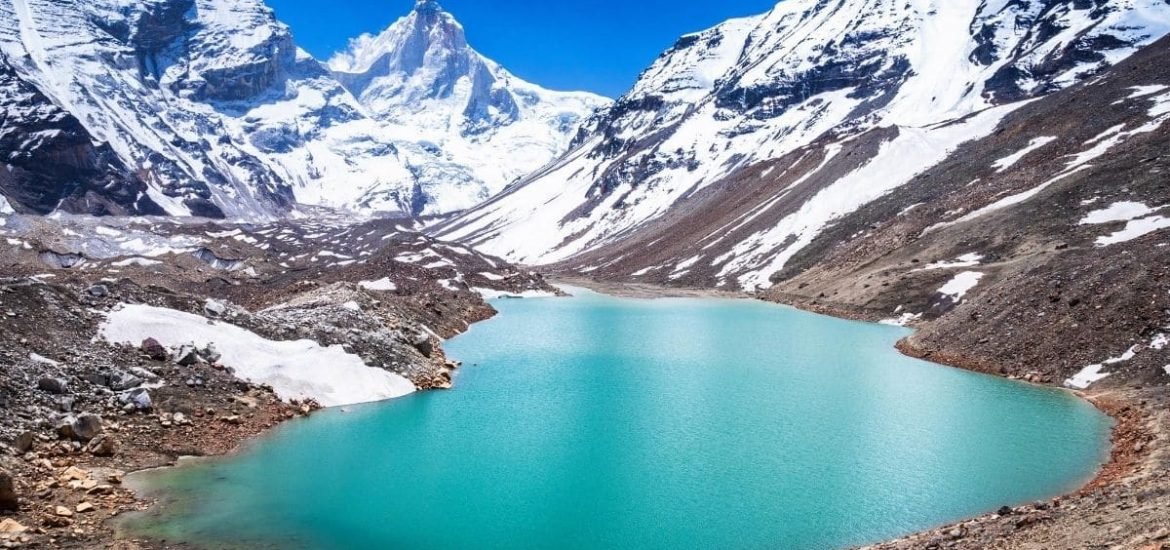
Water from melting glaciers is sharply increasing the volume of glacial lakes, according to a new study published on 31 August in the journal Nature Climate Change (1). The volume of glacial lakes increased by 50 per cent – that is, 50.8 cubic kilometres – in the past 30 years, which is equivalent to the volume of 20 million Olympic-size swimming pools.
Glacial lakes are an important source of freshwater for some of the poorest people in the world. However, most glacial lakes are dammed by ice or loose rock and debris, and water can easily bursting through these unstable barriers. The rapid growth of glacial lakes is therefore increasing the risk of so-called glacial lake outbursts.
This places downstream communities at serious risk of flooding, which can damage infrastructures, such as hydroelectric power plants, pipelines, and essentials roadways, and destroy livestock and farmland. Moreover, floods from glacial lakes have been responsible for tens of thousands of deaths over the last century.
The recent study is the most comprehensive to date in terms of geographic scope. Data were obtained from 250,000 scenes from NASA’s Landsat satellite missions and the Google Earth Engine and analyzed by scientists in Canada, the United States, and the United Kingdom.
”Using these cloud-based big data tools was critical,” said Dr Dan Shugar, an associate professor in the Department of Geoscience, and director of the Environmental Science Program at the University of Tacoma. “We ended up analyzing 254,795 Landsat scenes. A couple of years ago, this project would have been impossible to do on a global scale — there would have been so many terabytes of data that it would have been impossible to download and process all of it”.
Importantly, the study showed the while some meltwater flows into oceans, a substantial amount first feeds into and is retained by glacial lakes, highlighting the growing risk to communities in areas downstream from these growing glacial lakes.
According to another team of the researchers from the University of Leeds, University of Edinburgh, and University College London, the dramatic increase in global ice loss that is contributing to growing glacial lakes could lead to an increase in sea level rise of one metre by the end of the century – which could also have devastating impacts on communities. To put this into context, every centimetre of sea-level rise could displace around one million people living in low-lying areas.
In the study published last week as a preprint in The Cryosphere Discussions, the scientists revealed that from 1994 to to 2017, 28 trillion tonnes of ice has disappeared from the surface of the Earth (2). The reported ice loss matched worst-case-scenario predictions outlined by the Intergovernmental Panel on Climate Change (IPCC). The researchers also used satellite surveys, but in this case, to examine ice losses across the entire planet, including glacier regions in South America, Asia, Canada, the Arctic, Antarctica, and Greenland.
The authors wrote: “There can be little doubt that the vast majority of Earth’s ice loss is a direct consequence of climate warming”. The Earth’s average surface temperature has increased by 0.85 degree Celsius, on average, since preindustrial times. However, high-mountain regions are warming twice as fast.
Another paper recently reported that Greenland’s massive ice sheet saw a record net loss of over 500 billion tonnes last year, raising further concern about accelerating sea level rises (3). Indeed, Greenland’s crumbling glaciers were the single biggest source of global sea level rises last year, according to the authors.
Rapid ice loss could also have a negative impact on albedo: the ability of the earth’s surface to reflect sunlight back into space. More sunlight absorbed into the Earth’s surface will equate to more warning, creating a positive feedback loop. Since the other main cause of sea level rises is the expansion of ocean water as it warms, this is likely to further exacerbate sea level rises and its accompanying risks.
(1) Shugar, D.H. et al. Rapid worldwide growth of glacial lakes since 1990. Nature Climate Change (2020). DOI: 10.1038/s41558-020-0855-4
(2) Slater, T. et al. Review Article: Earth’s ice imbalance. The Cryosphere Discussions (2020). DOI: 10.5194/tc-2020-232
(3) Sasgen, I. et al. Return to rapid ice loss in Greenland and record loss in 2019 detected by the GRACE-FO satellites. Nature Communications Earth & Environment. DOI: 10.1038/s43247-020-0010-1
What happens to global warming when all the ice is gone? I’m thinking about a simple analogy – an ice cube in a glass of water. As heat is applied the water remains cool until the ice cube melts completely. After the ice cube is gone the water temperature will increase more rapidly. Will the same think happen to earth and will we eventually become another Mars? If so, what is the projected timeline for these changes?
Some interesting questions.